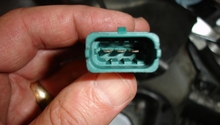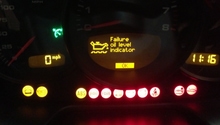Porsche 993: Why is My Car Jerking?
Driveability issues can show up with many different symptoms. This article looks at what could cause a 993 to buck under steady throttle.
This article applies to the Porsche 993 (1993-1998).
We all know how the Porsche 993 is built to be driven, with your right foot down and your tires getting a workout. However, in the real world there are pesky, straight roads with speed limitations, and wide open throttle is generally not an option. For many, the majority of driving is done just cruising at a set pace, not accelerating or decelerating. This "steady state" can reveal driveability issues in your 993 that would be otherwise masked. In this article, steady state "jerking" is diagnosed and discussed.

Materials Needed
- Multimeter
- OBD2 reader
- Basic wrench/socket/screwdriver sets
Step 1 – Check for codes
The car may already know what's wrong. If there is a check engine light (CEL) on while the car is running, start here.
All 993s have onboard diagnostic systems, but they vary a lot depending on the year. In 1996, they switched to the federally mandated "OBD2" protocol, and you will need a code reader to determine what is at fault. A proprietary Porsche reader isn't needed; any unit available at a local parts store will do just fine. On earlier models, you won't need any tools at all; simply depress the gas pedal before turning the key to the ON position, and the CEL will blink the codes to you, which you can then look up. If any codes are present, getting them taken care of is a great starting point.

Step 2 – Tune up
If maintenance has been neglected, the car won't be running at its best. This would be a good time to have a look at some maintenance records. When was the last time the spark plugs and wires were changed? How about the fuel filter? Distributor cap? Any of these wear items can cause driveability issues like bucking, and should be inspected and replaced if necessary.
Changing these parts out isn't terribly hard, but will take a little bit of wrenching. It's advisable to read up before tackling the project.
Related Articles
- Porsche 993: How to Replace Spark Plugs - Rennlist.com
- Porsche 993: How to Replace Spark Plug Wires - Rennlist.com

Step 3 – Assess any electrical issues
Electrical issues are some of the most common, and in some cases can be very easy to fix. The Bosch Motronic system in the 993 is very sensitive to voltages. If it doesn't see the right signals in the right places, issues will pop up. First, use a multimeter to check that the alternator is delivering the power it should be (above 14v on a healthy unit).
Grounding is a common issue as well. Over time, connections can corrode due to moisture in the air, and won't flow as much current as intended. Remove, clean, and reinstall all engine grounds to ensure proper function.
Finally, and most simply, check all of the wiring harness connectors in the engine bay. Just like the grounds, these can corrode and cause issues. One at a time, unplug each one and clean the contacts inside. Reconnect, and you may find your issues have disappeared.
Related Discussion
- Engine Jerking at Steady Throttle - Rennlist.com






